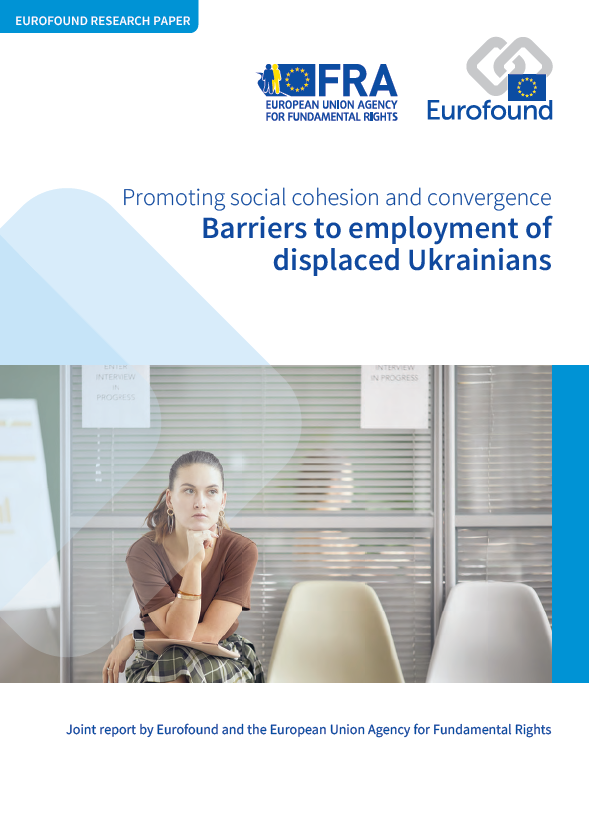
Reaguodama į Rusijos karą prieš Ukrainą, ES aktyvavo Laikinosios apsaugos direktyvą iš šalies pabėgusiems asmenims, suteikdama jiems galimybę apsigyventi ES ir naudotis pagrindinėmis viešosiomis paslaugomis bei darbo rinka. Iki 2023 m. pavasario Laikinosios apsaugos direktyva arba panašiomis nacionalinėmis apsaugos sistemomis ES pasinaudojo daugiau kaip 4,5 mln. žmonių. 2022 m. Europos Sąjungos pagrindinių teisių agentūra atliko internetinę iš Ukrainos perkeltų asmenų apklausą. EUROFOUND išanalizavo apklausos apie tai, kaip jiems sekėsi ieškoti darbo, rezultatus. Šiame dokumente nagrinėjamos pagrindinės kliūtys, su kuriomis susidūrė perkeltieji asmenys, ir siūloma, kaip palengvinti jų integraciją.
The research paper contains the following lists of tables and figures.
List of tables
- Table 1: Key characteristics of the online survey respondents (numbers and (weighted) proportions)
- Table 2: Respondents’ reasons for not being in paid employment
List of figures
- Figure 1: Host language proficiency of the respondents, by country (%, weighted)
- Figure 2: Contract types among respondents in employment in their host country (%, weighted)
- Figure 3: Barriers reported by respondents who have looked for a job in a host country (%, weighted)
- Figure 4: Probability of experiencing at least one barrier while seeking employment, by gender, age group, education level, financial situation and language skills
- Figure 5: Proportion of respondents who experienced labour market barriers while seeking employment, by barrier and age group (%)
- Figure 6: Proportion of respondents who experienced labour market barriers while seeking employment, by barrier and educational attainment (%)
- Figure 7: Share of respondents who mentioned self-reported barriers among those not in paid work, by country (%)
- Figure 8: Share of self-reported barriers among those not in paid work, by barrier and age category (%)
- Figure 9: Share of self-reported barriers among those respondents not in paid work, by barrier and educational attainment (%)
- Figure 10: Probability of perceiving at least one barrier to entering the labour market, by age, educational attainment, gender, financial situation and language skill groups
- Number of pages
-
32
- Reference nº
-
EF23015
- ISBN
-
978-92-897-2333-6
- Catalogue nº
-
TJ-03-23-207-EN-N
- DOI
-
10.2806/216178
- Permalink
Cite this publication
Eurofound and the European Union Agency for Fundamental Rights (2023), Barriers to employment of displaced Ukrainians, Eurofound research paper, Publications Office of the European Union, Luxembourg.